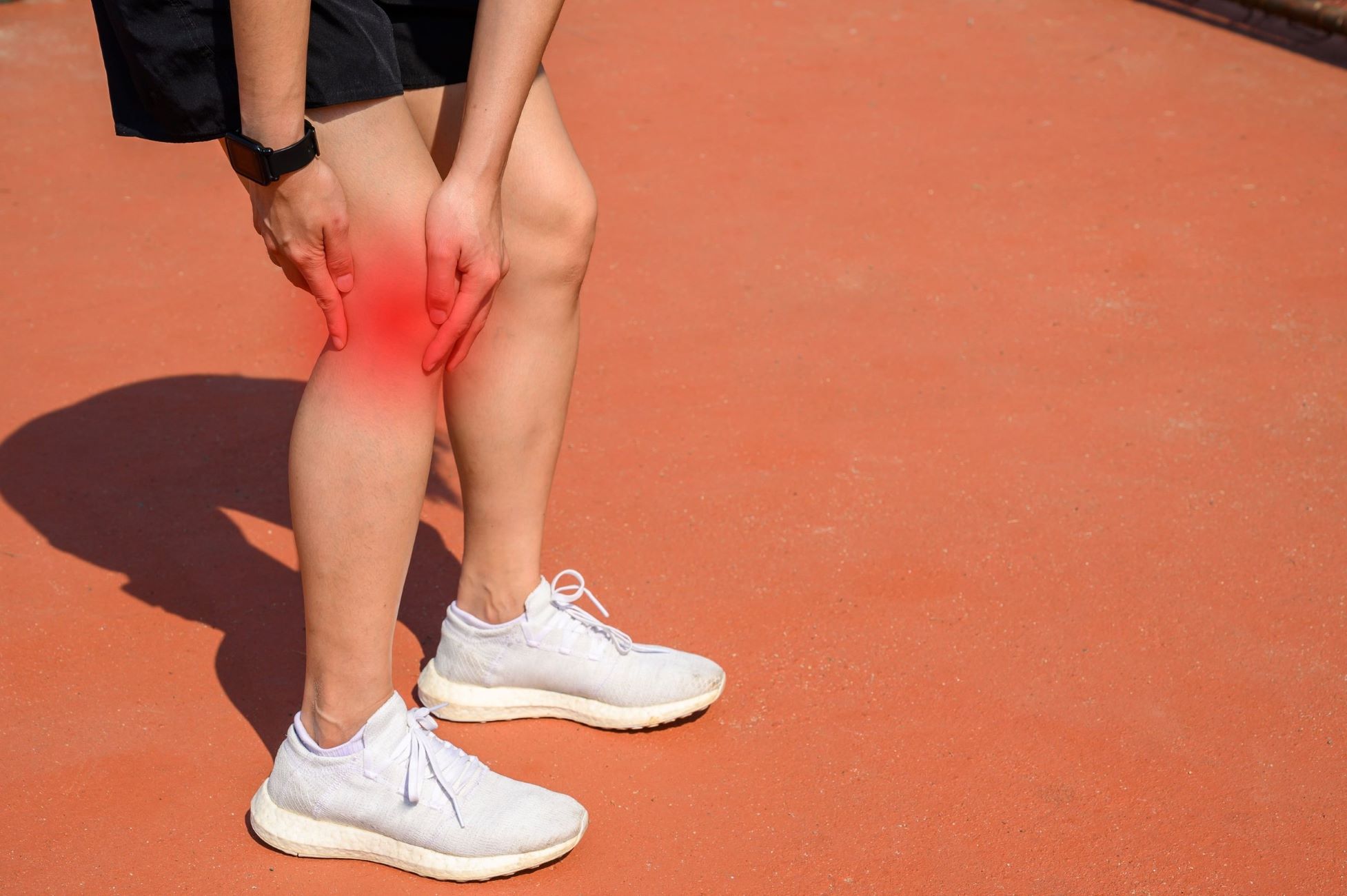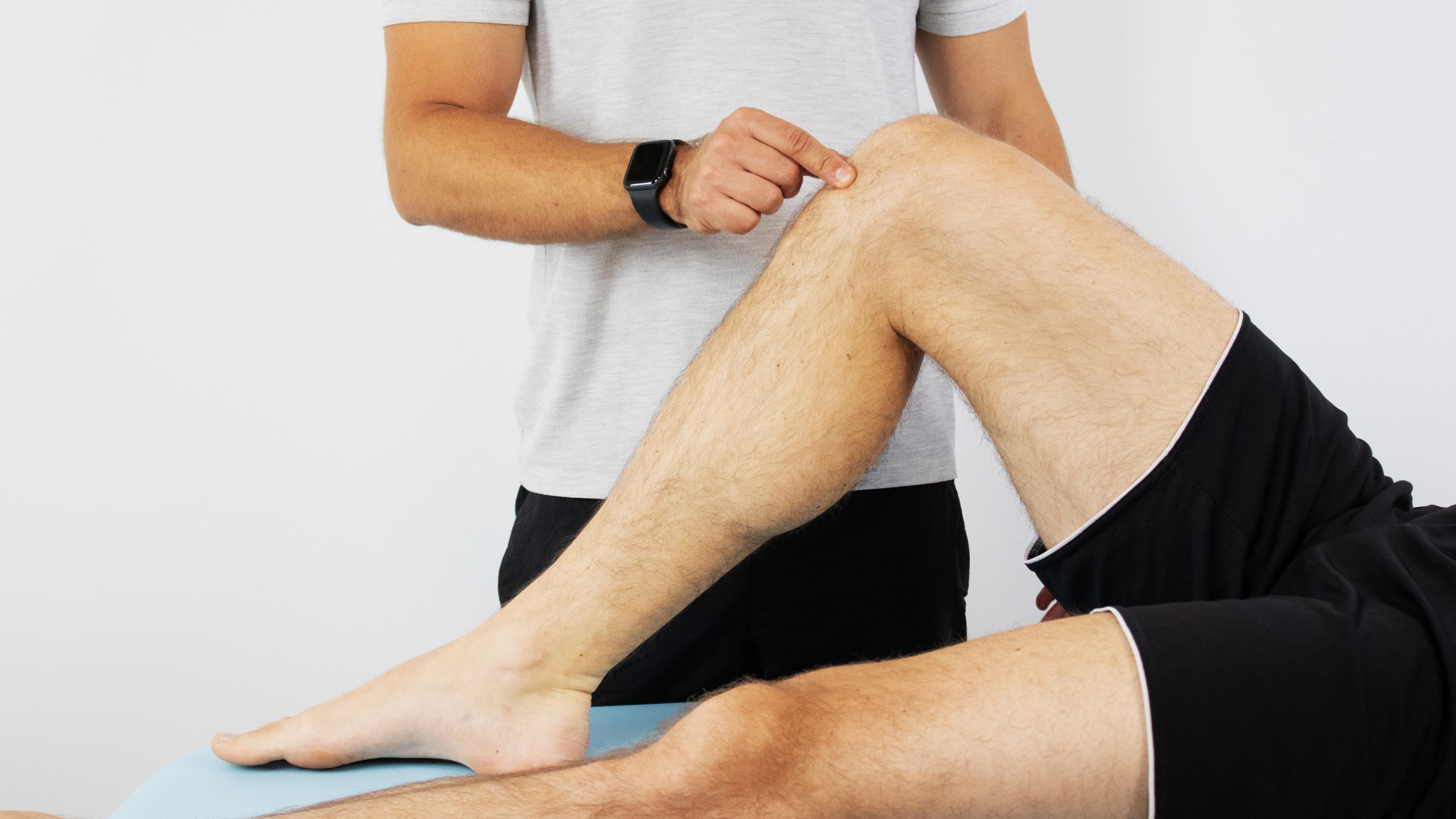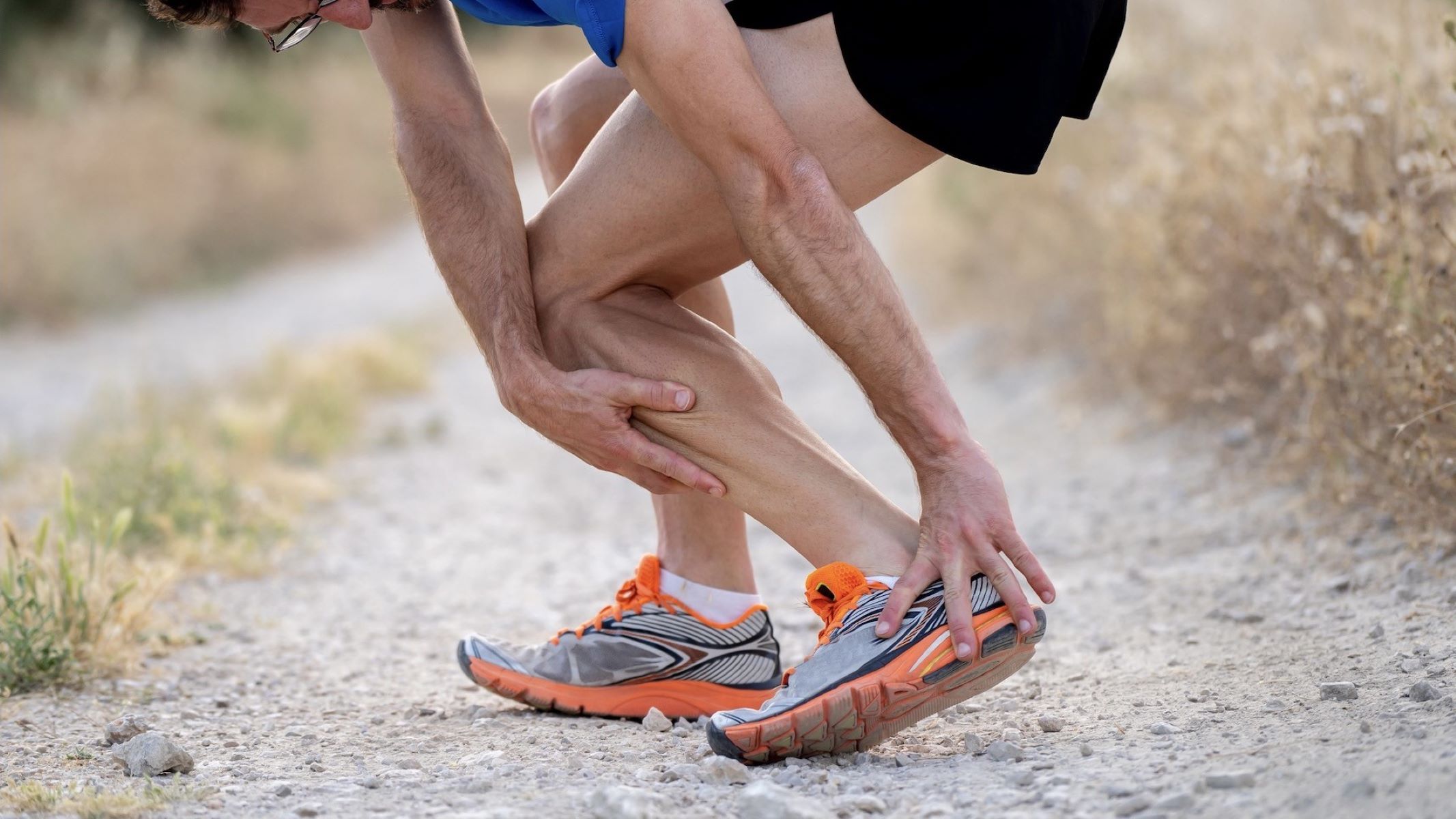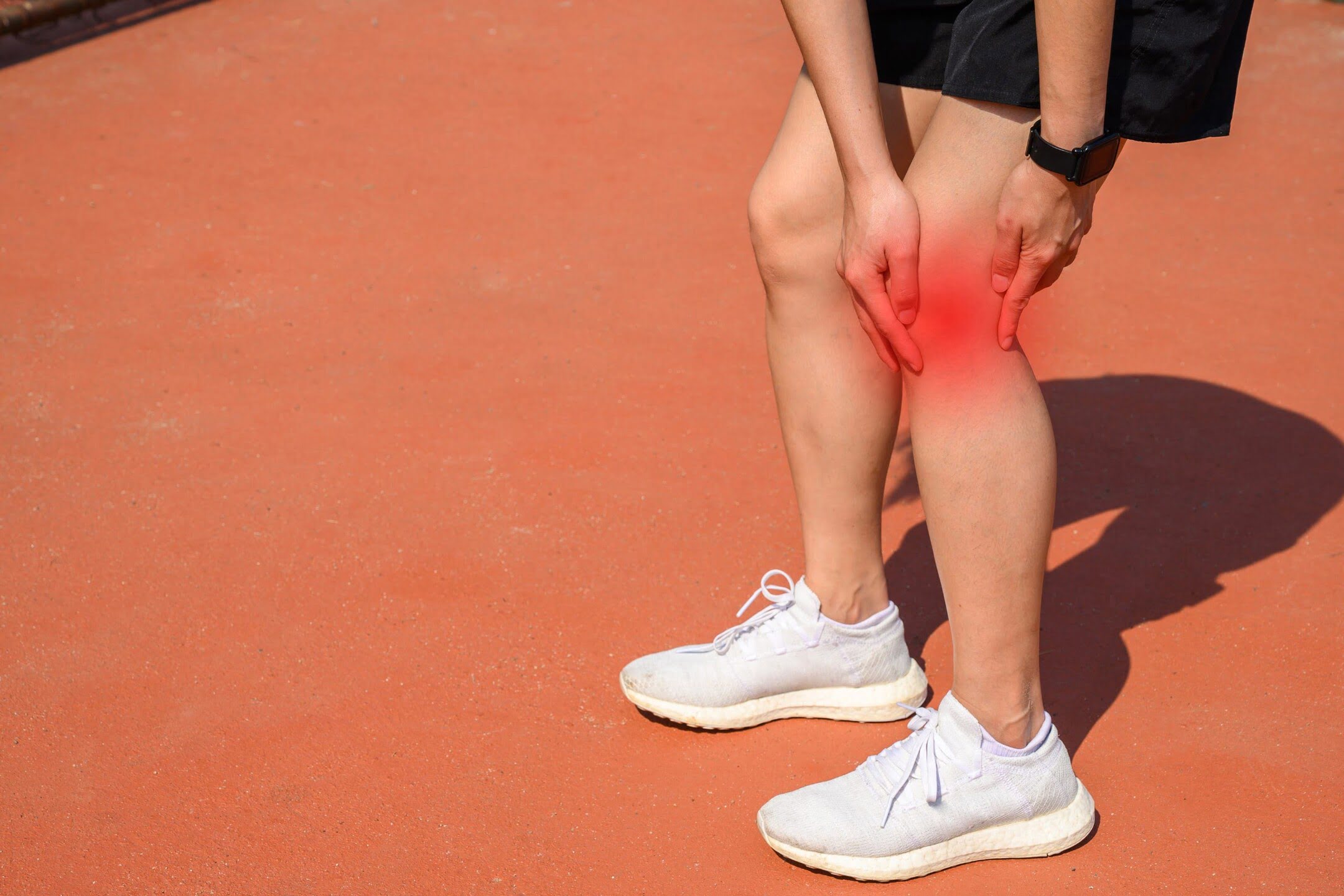Home>Health & Nutrition>Injury Prevention>All You Need To Know About IT Band Syndrome


Injury Prevention
All You Need To Know About IT Band Syndrome
Published: February 27, 2024
Learn about IT band syndrome and injury prevention techniques to keep your body in top shape. Discover effective strategies to avoid this common running injury.
(Many of the links in this article redirect to a specific reviewed product. Your purchase of these products through affiliate links helps to generate commission for Therunningadvisor.com, at no extra cost. Learn more)
Table of Contents
Understanding IT Band Syndrome
The iliotibial (IT) band is a thick band of fascia that runs along the outside of the thigh, from the hip to the shin. IT band syndrome, also known as ITB syndrome, is a common injury among athletes, particularly runners and cyclists. This condition occurs when the IT band becomes inflamed or irritated due to overuse, leading to pain and discomfort in the knee and hip areas.
The IT band plays a crucial role in stabilizing the knee during physical activities such as running, walking, and cycling. When the band becomes tight or inflamed, it can result in friction and rubbing against the thigh bone, leading to discomfort and restricted movement.
Understanding the biomechanics of IT band syndrome is essential for both athletes and non-athletes. The repetitive motion of the knee during activities like running or cycling can contribute to the development of IT band syndrome. Additionally, factors such as muscle imbalances, improper footwear, and sudden increases in training intensity can also exacerbate the condition.
It's important to note that IT band syndrome is not solely limited to athletes. Individuals who engage in activities that involve repetitive knee movements or prolonged standing may also be susceptible to this condition. Understanding the underlying causes and risk factors associated with IT band syndrome can help individuals take proactive measures to prevent and manage this injury effectively.
By gaining a comprehensive understanding of IT band syndrome, individuals can make informed decisions regarding their training routines, footwear choices, and overall physical activities. This knowledge empowers individuals to recognize the early signs of IT band syndrome and take appropriate steps to address the issue before it progresses into a more severe and debilitating condition.
Causes of IT Band Syndrome
IT band syndrome can be attributed to a variety of factors, many of which are related to the biomechanics of the lower body and the stresses placed on the IT band during physical activities. Understanding the underlying causes of IT band syndrome is crucial for both prevention and effective management of this condition.
-
Overuse and Repetitive Motion: Engaging in activities that involve repetitive knee movements, such as running, cycling, or hiking, can lead to overuse of the IT band. The continuous flexion and extension of the knee during these activities can cause friction and irritation of the IT band, ultimately leading to inflammation and discomfort.
-
Muscle Imbalances: Imbalances in the muscles surrounding the hip and knee can contribute to the development of IT band syndrome. Weakness or tightness in the hip abductor and external rotator muscles, as well as the quadriceps and hamstrings, can alter the biomechanics of the lower body, placing increased stress on the IT band during movement.
-
Improper Footwear: Wearing footwear that does not provide adequate support or stability can impact the alignment and function of the lower body. Improper footwear can alter the mechanics of the foot and ankle, leading to compensatory movements that place additional strain on the IT band.
-
Training Errors: Sudden increases in training intensity, frequency, or duration without allowing sufficient time for the body to adapt can contribute to the development of IT band syndrome. Failing to incorporate gradual progression and recovery periods into training routines can lead to overloading of the IT band and surrounding structures.
-
Biomechanical Factors: Individual anatomical variations, such as leg length discrepancies, abnormal foot arches, or pelvic alignment issues, can influence the biomechanics of the lower body. These factors may predispose individuals to altered movement patterns and increased stress on the IT band during physical activities.
-
Inadequate Warm-Up and Cool-Down: Failing to properly warm up the muscles before engaging in physical activities or neglecting to incorporate adequate stretching and cool-down routines can increase the risk of IT band syndrome. Insufficient preparation and recovery can contribute to muscle tightness and decreased flexibility, placing greater strain on the IT band.
By recognizing the diverse causes of IT band syndrome, individuals can take proactive measures to address these contributing factors and reduce the risk of developing this debilitating condition. Implementing targeted strength and flexibility exercises, optimizing training techniques, and prioritizing proper biomechanics can play a pivotal role in preventing and managing IT band syndrome effectively.
Symptoms of IT Band Syndrome
Recognizing the symptoms of IT band syndrome is crucial for early detection and effective management of this condition. Individuals experiencing IT band syndrome may encounter a range of discomfort and limitations that impact their daily activities and physical performance. The following symptoms are indicative of IT band syndrome:
-
Pain on the Outside of the Knee: One of the hallmark symptoms of IT band syndrome is pain located on the outside of the knee. This pain may manifest as a sharp or aching sensation, particularly during activities that involve bending and straightening the knee, such as running, walking, or climbing stairs. The intensity of the pain can vary, ranging from mild discomfort to severe, debilitating pain that interferes with movement.
-
Hip Pain or Tenderness: Individuals with IT band syndrome may also experience pain or tenderness in the hip area, particularly where the IT band inserts into the hip bone. This discomfort can be exacerbated by activities that engage the hip muscles, such as standing from a seated position or performing hip abduction movements.
-
Swelling and Inflammation: Inflammation of the IT band and surrounding tissues can result in localized swelling, particularly along the outside of the knee. The affected area may appear visibly swollen and feel warm to the touch. Swelling is often accompanied by redness and increased sensitivity to pressure.
-
Snapping Sensation: Some individuals with IT band syndrome may experience a snapping or popping sensation on the outside of the knee during movement. This sensation, known as snapping hip syndrome, occurs when the IT band moves back and forth over the bony prominence of the thigh bone, leading to audible or palpable snapping.
-
Aggravation with Activity: Symptoms of IT band syndrome typically worsen during physical activities that engage the lower body, such as running, cycling, or prolonged standing. The pain and discomfort may intensify as the IT band undergoes repetitive friction and compression, limiting the individual's ability to perform these activities comfortably.
-
Tenderness to Touch: The affected area along the outside of the knee may exhibit tenderness to touch, indicating heightened sensitivity and localized discomfort. Palpation of the IT band insertion point at the hip may also elicit tenderness and discomfort.
-
Limited Range of Motion: Individuals with IT band syndrome may experience a restricted range of motion in the knee and hip joints. This limitation can impede activities that require full flexion and extension of the lower limbs, leading to stiffness and reduced functional mobility.
By being mindful of these symptoms, individuals can promptly seek appropriate medical evaluation and implement targeted interventions to alleviate discomfort and facilitate the recovery process. Early recognition of these symptoms empowers individuals to take proactive measures to address IT band syndrome and prevent its progression into a more debilitating condition.
Diagnosis and Treatment of IT Band Syndrome
Diagnosing IT band syndrome typically involves a comprehensive assessment of the individual's medical history, a thorough physical examination, and, in some cases, diagnostic imaging studies. Healthcare professionals, such as orthopedic specialists, sports medicine physicians, or physical therapists, play a pivotal role in accurately diagnosing and devising tailored treatment plans for IT band syndrome.
During the physical examination, the healthcare provider may perform specific maneuvers to evaluate the individual's range of motion, joint stability, and localized tenderness along the IT band and surrounding structures. Palpation of the affected area, coupled with targeted orthopedic tests, can aid in identifying the characteristic symptoms associated with IT band syndrome, such as pain on the outside of the knee and hip tenderness. Additionally, assessing the individual's gait and lower limb biomechanics can provide valuable insights into the underlying factors contributing to IT band syndrome.
Diagnostic imaging studies, including ultrasound or magnetic resonance imaging (MRI), may be utilized to visualize the IT band and assess for any structural abnormalities or soft tissue inflammation. These imaging modalities can help confirm the diagnosis of IT band syndrome and rule out other potential causes of knee and hip pain, such as meniscal injuries or bursitis.
Once a diagnosis is established, the treatment approach for IT band syndrome typically encompasses a multifaceted strategy aimed at alleviating symptoms, addressing contributing factors, and promoting rehabilitation. The following interventions are commonly employed in the management of IT band syndrome:
-
Rest and Activity Modification: Temporary modification of physical activities that exacerbate IT band symptoms, such as running or cycling, can facilitate the initial phase of recovery. Engaging in low-impact exercises or cross-training activities that minimize stress on the IT band can help maintain cardiovascular fitness while allowing the affected tissues to heal.
-
Physical Therapy: Targeted physical therapy interventions, including stretching and strengthening exercises for the hip abductors, quadriceps, and hamstrings, can help address muscle imbalances and improve lower limb biomechanics. Manual therapy techniques, such as soft tissue mobilization and myofascial release, may also be employed to alleviate tension in the IT band and surrounding musculature.
-
Biomechanical Assessment: Evaluating the individual's gait, foot mechanics, and lower limb alignment can provide valuable insights into potential biomechanical factors contributing to IT band syndrome. Custom orthotics or footwear modifications may be recommended to optimize lower limb alignment and reduce excessive stress on the IT band during weight-bearing activities.
-
Anti-Inflammatory Measures: Nonsteroidal anti-inflammatory drugs (NSAIDs) or topical analgesic agents may be prescribed to alleviate pain and reduce inflammation in the affected area. These medications can help manage acute symptoms and facilitate participation in rehabilitative exercises.
-
Corticosteroid Injections: In cases of persistent or severe symptoms, corticosteroid injections may be considered to provide targeted relief of inflammation along the IT band. These injections are administered under ultrasound guidance to ensure precise delivery of the medication to the affected area.
-
Gradual Return to Activity: As symptoms improve, a gradual return to running or cycling may be initiated under the guidance of a healthcare professional. Implementing a structured training program that incorporates progressive increases in intensity and duration can help prevent recurrence of IT band syndrome while allowing the individual to resume their preferred physical activities safely.
By implementing a comprehensive treatment approach that addresses the underlying biomechanical factors, promotes tissue healing, and facilitates a gradual return to activity, individuals can effectively manage IT band syndrome and minimize the risk of long-term complications. Collaborating with healthcare professionals and adhering to personalized treatment plans can optimize the recovery process and support the individual's journey toward restored mobility and physical well-being.
Prevention and Recovery from IT Band Syndrome
Preventing and recovering from IT band syndrome requires a multifaceted approach that encompasses proactive measures to minimize the risk of injury and targeted interventions to facilitate the healing process. By integrating preventive strategies and prioritizing comprehensive rehabilitation, individuals can effectively manage IT band syndrome and promote long-term musculoskeletal health.
Read more: All You Need To Know About Strava Summit
Prevention Strategies
-
Gradual Training Progression: Implementing a gradual and progressive approach to training is essential for minimizing the risk of IT band syndrome. Gradually increasing running mileage, cycling intensity, or hiking duration allows the body to adapt to the demands of physical activities, reducing the likelihood of overuse injuries.
-
Cross-Training and Strength Training: Incorporating cross-training activities, such as swimming or elliptical workouts, can diversify the physical stress placed on the body, reducing the repetitive strain on the IT band. Additionally, targeted strength training for the hip abductors, quadriceps, and hamstrings can enhance muscular support and stability around the knee and hip joints.
-
Proper Footwear and Equipment: Selecting footwear that provides adequate cushioning, support, and stability is crucial for optimizing lower limb biomechanics and reducing excessive stress on the IT band. Furthermore, utilizing appropriate cycling equipment, such as properly fitted bikes and well-adjusted cleats, can minimize biomechanical imbalances during cycling activities.
-
Warm-Up and Cool-Down Routines: Prioritizing dynamic warm-up exercises before engaging in physical activities and incorporating thorough cool-down routines can prepare the muscles for movement and promote post-exercise recovery. Dynamic stretching and foam rolling can help maintain muscle flexibility and reduce tension in the IT band.
-
Biomechanical Assessment: Undergoing a biomechanical assessment by a qualified healthcare professional can identify potential anatomical variations or gait abnormalities that may predispose individuals to IT band syndrome. Customized orthotic interventions or gait modifications can optimize lower limb alignment and reduce the risk of overuse injuries.
Recovery and Rehabilitation
-
Comprehensive Physical Therapy: Engaging in a structured physical therapy program that includes targeted stretching, strengthening, and manual therapy techniques can facilitate the recovery from IT band syndrome. Addressing muscle imbalances, improving flexibility, and enhancing lower limb biomechanics are integral components of the rehabilitation process.
-
Activity Modification and Rest: Temporarily modifying or reducing activities that exacerbate IT band symptoms allows the affected tissues to heal. Engaging in low-impact exercises or alternative forms of physical activity can maintain cardiovascular fitness while minimizing stress on the IT band.
-
Patient Education and Self-Management: Educating individuals about the contributing factors and symptoms of IT band syndrome empowers them to make informed decisions regarding their training routines and physical activities. Implementing self-management strategies, such as home exercises and self-massage techniques, can complement professional interventions and promote active participation in the recovery process.
-
Gradual Return to Activity: As symptoms improve, gradually reintroducing running, cycling, or other preferred activities under the guidance of a healthcare professional is essential for preventing recurrence of IT band syndrome. Structured training programs that emphasize gradual progression and monitoring of symptoms support a safe and sustainable return to physical activities.
By integrating these preventive strategies and prioritizing comprehensive rehabilitation, individuals can effectively manage IT band syndrome and promote long-term musculoskeletal health. Embracing a proactive approach to injury prevention and recovery empowers individuals to pursue their athletic endeavors with confidence and resilience.















